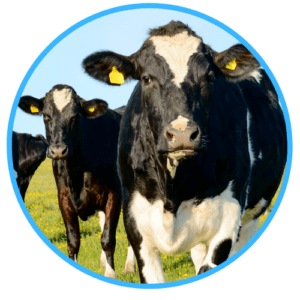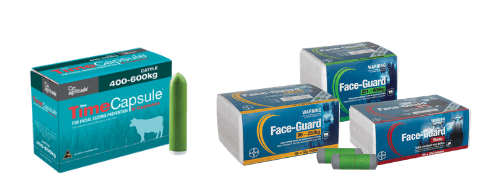How to prevent Facial Ecema
1. Feed fewer spores
Feed alternate feeds and pastures such as turnips, chicory, fodder beet, plantain, maize silage, PKE, meal and silage or hay made more than 6 weeks previously. Spores are at their highest numbers the lower you go down in the sward so keeping post grazing residuals above 4cms will reduce the number eaten.
2. Spray pasture with fungicides
Fungicides only work when the pasture is green and growing. Do a spore count before spraying, it should be less than 20,000 immediately before application. Be sure the spray goes right to the edges of the paddocks, under the hedges and beneath any trees. Helicopter spraying won’t achieve this. The spray lasts 4-6 weeks so you should start doing spore counts after 4 weeks and respray immediately they start to rise.
The gold standard is daily drenching of zinc oxide and some farmers still do this. The difference between a full dose of zinc and a toxic dose is small. Most NZ dairy herds have about 150kg difference between their lightest and heaviest cows so it is a good idea to weigh a few cows to ensure your dosing is accurate.
Next best is to feed zinc oxide in a pelletised feed or from a mixer wagon. Poor mixing and non-pelleted feeds risk underdosing the shy feeders and overdosing the gutsy ones. Once again the difference between a full dose of zinc and a toxic dose is small.
Zinc boluses are more convenient for young or dry stock. Young and dry stock don’t drink enough water to get protective levels of zinc from water treatment. Boluses take two weeks to reach full protection and last for up to 6 weeks so a crystal ball helps decide when to put them in. If spore counts are dangerously high when the boluses are coming to the end of their protection period it is a good idea to do a faecal zinc test to make sure zinc levels are still high enough to give protection.
Add zinc sulphate or zinc sulphate heptahydrate to the water supply – milkers only.
Young and dry stock don’t drink enough water to get protective levels of zinc. As we have learned in the past, water treatment doesn’t prevent Facial Eczema when the spore challenge is very high. In bad eczema years, it will protect at the beginning and end of the season but not at the peak. If you only do water treatment you need to have a backup plan to use if spore counts go through the roof again this year. That backup plan may be to put zinc boluses down your cows to cover them through the worst 6 weeks of the Facial Eczema season. Putting zinc salts straight into the trough is never good enough. The difference between a full dose of zinc and a toxic dose is small.
You need a Dosatron or Peta dispensers. Wonder’s Zinc Soxx are the next best option. The recommended dose varies between products so be sure to follow the instructions carefully. Whatever method you use, you need to check if it is delivering a protective dose of zinc to your stock. Wait 3-6 weeks after you reach full dose rates and do a blood zinc test on 10 animals. A GGT test on the same blood samples will tell us if subclinical eczema damage is already happening.
Dry stock such as R1’s and R2’s do not drink enough water for trough supplementation to be effective in moderate/high challenge seasons. Therefore, bolus supplementation with products such as Faceguard is considered optimal.
When to supplement?
Every year we get asked this question repeatedly and the answer is – It depends, which is a bit of a cop-out but here are some guidelines.
- FE in January occurs when we get ideal conditions, remember the 3 W’s
- FE season can go on longer than you think, don’t stop treatment too early, I see more cases of FE in May than January for example
- Once you begin supplementation it takes 7-10 days for protective levels to be reached, leaving supplementation until you see cases is too late!
Monitor our website for spore counts in your area or even better bring a pasture sample into us for a count.
Samples need to be about half a bread bag in size, cut the grass off at ground level without soil/roots.
The two zinc boluses on the market have differing zinc forms. Time Capsules have a zinc oxide core that is released slowly from the uncapped end of the bolus. One problem with these is that the green cover can fragment during bolus application and the bolus dissolves too quickly. They only last 4-5 weeks then need repeat dosing. However, they are much easier to give to smaller animals such as jersey weaners than the Faceguard bolus.
Several weight ranges available (90-130 kg, 130-175kg, 175-250kg, 250-400kg, 400-600kg, lamb and sheep). Repeat dose after 4-5 weeks.
The other bolus Faceguard is elemental zinc. It’s a little more expensive but lasts a little longer so, in a normal year, only one top-up dose is required after 6 weeks. Two bolus sizes (90-250kg 251-660kg) and given in multiples depending on the weight of the animal. Top-up after 6 weeks with a reduced dose which lasts a further 4 weeks.
Ross Gadsby BVSc
New Plymouth Vet Group


